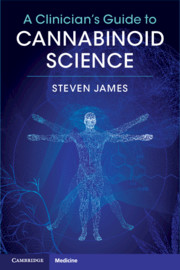Book contents
- A Clinician’s Guide to Cannabinoid Science
- Reviews
- A Clinician’s Guide to Cannabinoid Science
- Copyright page
- Dedication
- Contents
- Preface
- Section 1 An Introduction to Cannabinoid Science
- Chapter 1 An Introduction to the Botany and History of Cannabinoids
- Chapter 2 Δ9-Tetrahydrocannabinol (THC) and Cannabidiol (CBD)
- Chapter 3 The Endocannabinoids
- Chapter 4 Approved Cannabinoid Medicines for Therapeutic Use
- Chapter 5 The Safety of Phytocannabinoids and Cannabinoids in Clinical Practice
- Section 2 Potential Therapeutic Uses of Cannabinoids in Clinical Practice
- Index
- References
Chapter 1 - An Introduction to the Botany and History of Cannabinoids
from Section 1 - An Introduction to Cannabinoid Science
Published online by Cambridge University Press: 12 October 2020
- A Clinician’s Guide to Cannabinoid Science
- Reviews
- A Clinician’s Guide to Cannabinoid Science
- Copyright page
- Dedication
- Contents
- Preface
- Section 1 An Introduction to Cannabinoid Science
- Chapter 1 An Introduction to the Botany and History of Cannabinoids
- Chapter 2 Δ9-Tetrahydrocannabinol (THC) and Cannabidiol (CBD)
- Chapter 3 The Endocannabinoids
- Chapter 4 Approved Cannabinoid Medicines for Therapeutic Use
- Chapter 5 The Safety of Phytocannabinoids and Cannabinoids in Clinical Practice
- Section 2 Potential Therapeutic Uses of Cannabinoids in Clinical Practice
- Index
- References
Summary
Plants have been a plentiful source of useful drugs and remedies throughout human history. In the early nineteenth century Friedrich Sertürner isolated morphine from the opium plant. By 1827, morphine was marketed by Merck in Germany and the origins of the modern pharmaceutical industry began. Over the remainder of the nineteenth century further advances in organic chemistry led to identification of other drugs from plant material. Examples of important medicines developed from plants included quinine from the bark of the cinchona tree for the treatment of malaria and salicylic acid from the willow tree that eventually led to the development of aspirin (Anderson, 2005).
- Type
- Chapter
- Information
- A Clinician's Guide to Cannabinoid Science , pp. 1 - 12Publisher: Cambridge University PressPrint publication year: 2020



